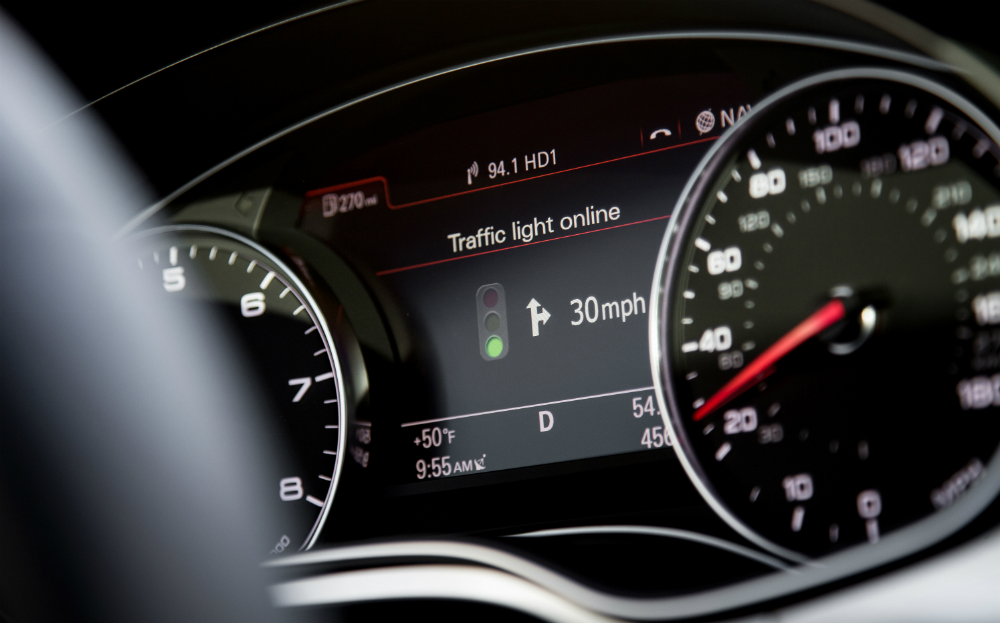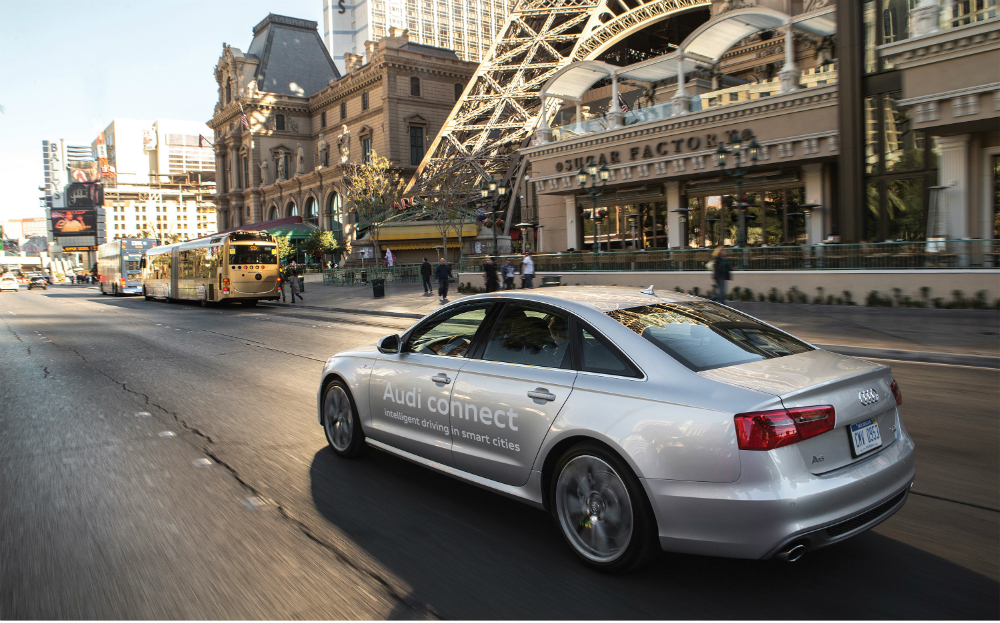No more seeing red after Audi reveals cars that can 'talk' with traffic lights
New system debuts in US
FOR DRIVERS, dealing with traffic lights is always the same. When the lights are red, you engage neutral and apply the handbrake — only to see the lights change to green. And when you’re approaching green lights at speed, sod’s law dictates that they will switch, leaving you facing the amber gambler’s dilemma: do you stand on the brakes or hope to squeeze through in time?
Now, however, the upwardly mobile car maker Audi says it is making such irritations a thing of the past. It has introduced the first cars that can communicate with traffic lights, meaning drivers will know what action to take.
The Traffic Light Information system uses mobile-phone data networks to communicate with the local traffic light network. The timing sequence of the lights is analysed, and the driver is then told the time remaining to pass through an upcoming green light and the speed required to do so.
Browse NEW or USED cars for sale on driving.co.uk
Some wags have compared it to time-trial driving video games and asked how many points drivers will get for accelerating through traffic lights in time.

Certain Q7s, A4s and A4 Allroads will be the first Audis to have the technology, and American drivers in big cities will get to try it before us. Their cars will need to have Audi’s Connect Prime service, which connects them to the internet at a cost of $199 (£150) for six months.
Audi has yet to confirm when the technology will be available in Europe. Successful trials have taken place in Germany, but it’s unclear how many of Europe’s traffic lights use the same technology.
“This feature represents Audi’s first step in vehicle-to-infrastructure integration,” said Pom Malhotra, general manager of the manufacturer’s Connected Vehicles division. “In the future we could envision this technology integrated into vehicle navigation, stop-start functionality and even being used to improve traffic flow. This could lead to shorter commuting times.”





